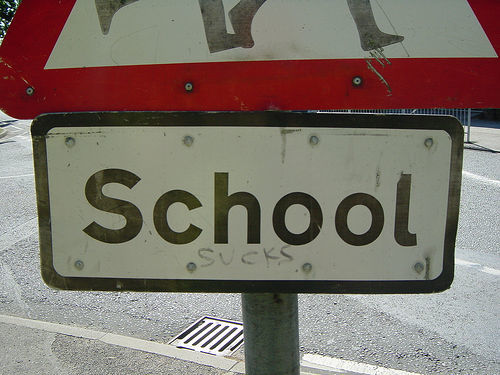Charter school lawyers met in Chicago in October to discuss the public school choice movement’s greatest obstacles: Red tape, union opposition, and funding.
The biggest hurdle facing charters nationwide is “bureaucracy,” said Rocco Testani, a partner at Sutherland Asbill & Brennan LLP, a firm with offices in Atlanta, DC, New York, Houston, Austin, and Sacramento. “Charter schools are dying under bureaucracy and red tape.”
Government officials and agencies often propose new regulations for schools under the label of “accountability,” although choice schools naturally operate under a different kind of accountability than most government agencies: Accountability to parents, who are free to move their kids to another school. A central reason charters exist is to see what schools can do with greater flexibility than a traditional public school.
“As charters receive more attention and recognition, the demand for regulation will increase,” said Emily Kim, the chief legal officer for Success Charter School Academies. Paperwork and regulation interferes with a charter’s ability to educate children.”
Charter schools first arrived in 1992 in Minnesota, and now 42 states and DC allow them. Charter schools enroll approximately 2 million children, or some 5 percent of the nation’s K-12 students. Another half a million kids sit on charter school waiting lists.
Illinois Charter Effectiveness
As the state with the third-largest school district in the country and no private school choice programs, Illinois has been the focus of numerous studies on charter school effectiveness. Despite being surrounded by an array of challenges from a collapsing state budget, narrow authorization procedures, and many vehemently opposed legislators and community members, students in Illinois charter schools get higher test scores that equate to an extra 14 days’ worth of reading and an extra 22 days of math learning each year compared to their traditional public school counterparts, according to a recent study by Stanford University’s Center for Research on Education Outcomes.
“You may have great schools, but that doesn’t mean families can’t benefit from a different option,” said Andrew Broy, president of the Illinois Network of Charter Schools.
For the past ten years, charter students in Chicago have been more likely to graduate from high school than their peers in traditional public schools, Broy noted in his opening remarks.
“In 2011 nine of the 10 highest-scoring nonselective high schools taking the ACT in Chicago were charter schools, even though they make up less than 10 percent of the Chicago Public Schools population,” he said.
Union-Led Opposition
Despite such positive outcomes, Illinois charters face many obstacles.
Although parents see the value in having education options for their children, Illinois politicians do not always agree, said Greg Richmond, president of the National Association of Charter School Authorizers.
“Charter schools lost the PR war during the teacher union strike in Chicago last year,” said Elizabeth Purvis, CEO for the Chicago International Charter School. “The strike had nothing to do with charter schools, yet Karen Lewis, the president of the Chicago Teachers Union, made it about charters.”
Union influence reaches far beyond Chicago, Broy said. He said when he has pressured state legislators to expand charter schools beyond Chicago they often say they are receiving money from the Illinois Education Association and don’t want to fight the statewide union.
“It’s hard to get legislators outside of Chicago to care about charter schools,” Broy said.
Need for Teachers
Another obstacle charter schools are facing in Illinois and nationwide is obtaining strong, experienced teachers. The average Chicago public school teacher makes $77,000 a year, whereas the average charter teacher makes approximately $54,000, Broy said. “Therefore, charters attract younger, less experienced teachers,” he noted.
New teachers often see charters as a stepping stone to a traditional public school where they can make more money.
“Teacher leadership and quality teachers are what make great schools,” Broy said. “If charter schools cannot retain teachers, they cannot be competitive.”
Whether dealing with unions, bureaucracy, a lack of experienced teachers, or financial difficulties, “The goal is take away obstacles that get in the way of educating,” Testani said.
Image by Lucy Gray.




